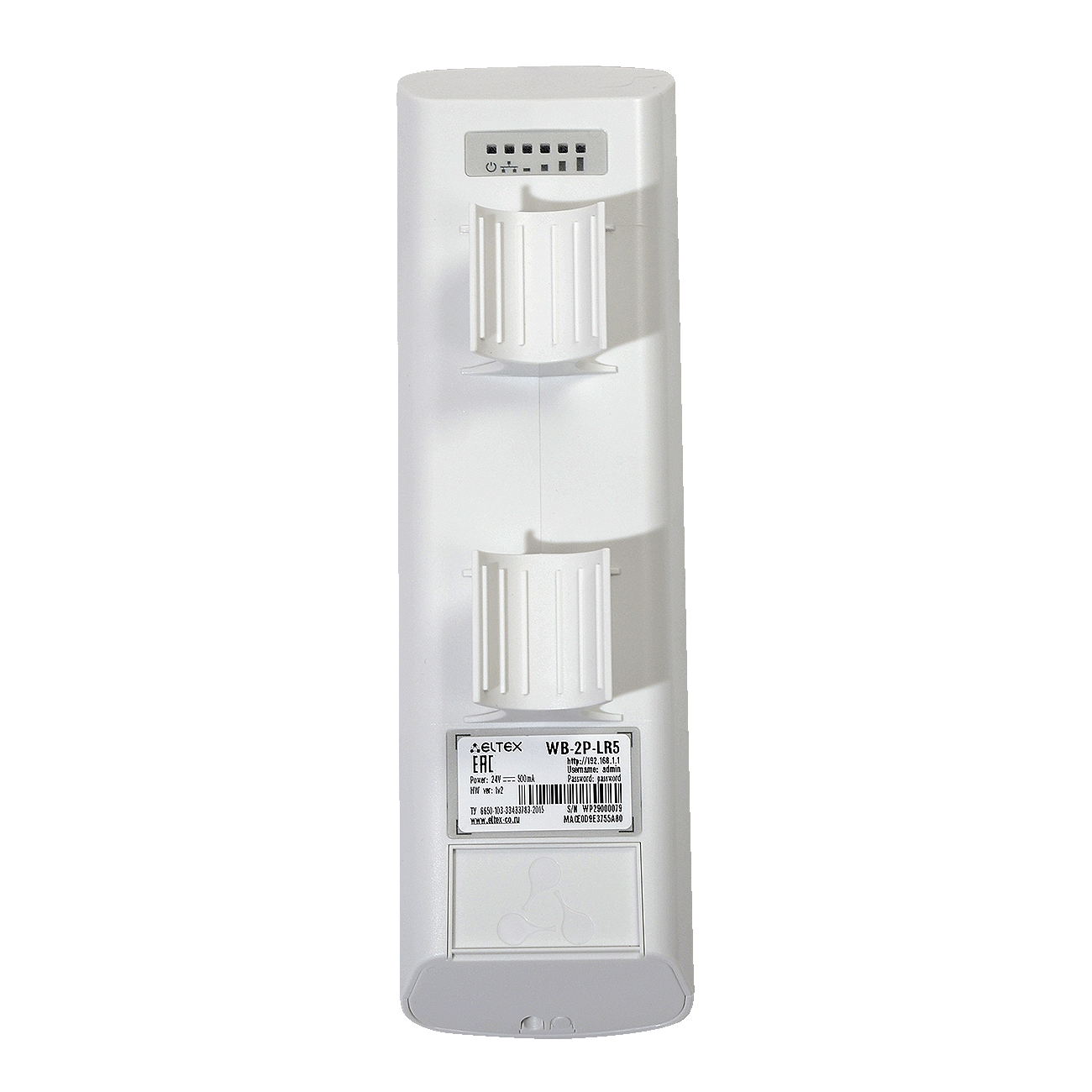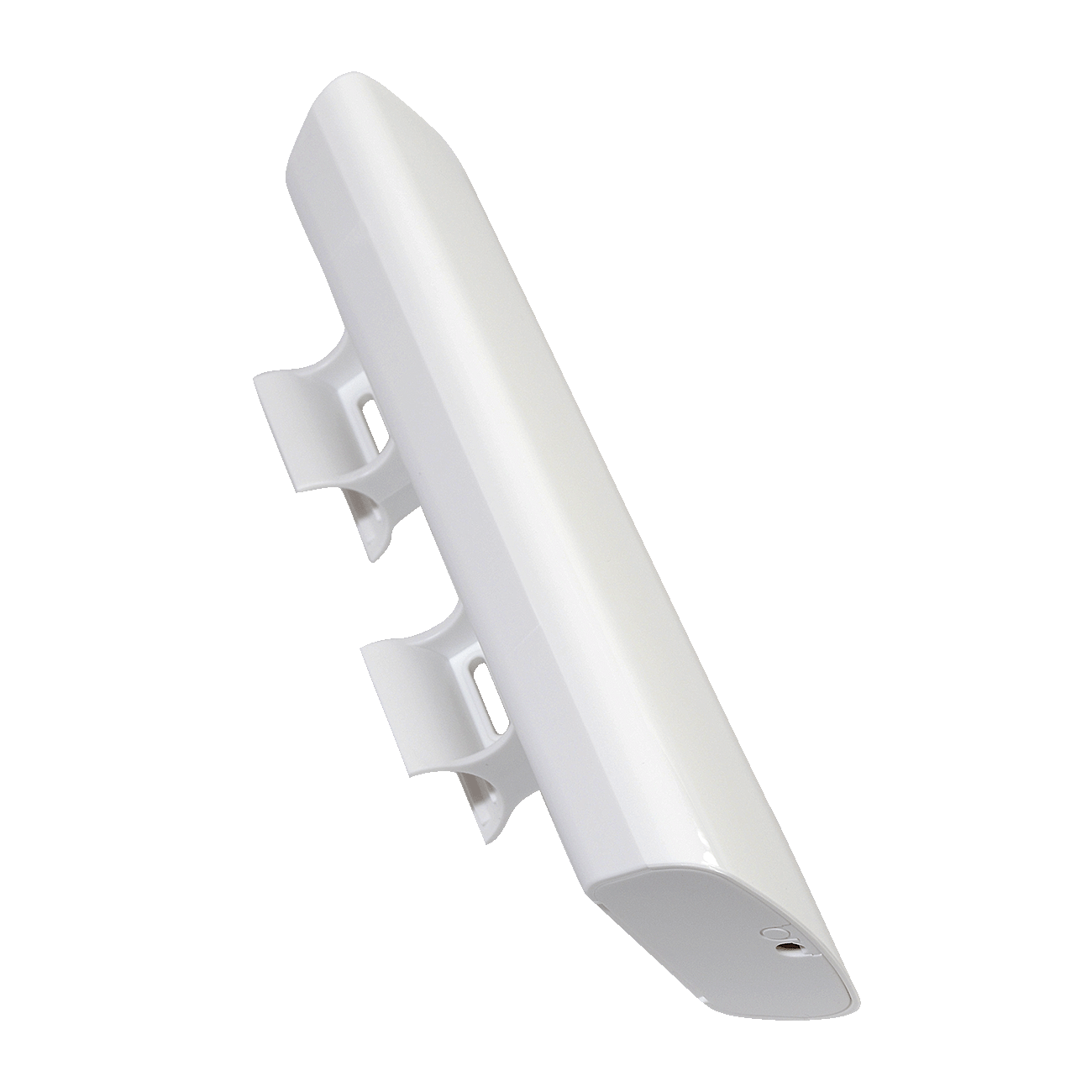Wireless user station WB-2P-LR2
- Wi-Fi 4:
- 802.11n
- MIMO:
- 2x2
- Frequency range:
- 2400-2483.5 MHz
- Transmitter power:
- up to 26 dBm
- Power supply:
- PoE 24 V


Description
WB-2P-LR2 is a high performance wireless user station designed for up-to-date high speed service provision via Wi-Fi technology.
Wireless connection
WB-2P-LR2 is developed for connection to Wi-Fi access network which might be constructed using base stations within long distances.
Performance
To ensure a stable and uninterrupted operation, the device is equipped with high-performance processors providing high routing rates and ensuring the effective operation of FBWA (Fixed Broadband Wireless Access) technology.
Advanced warranty and support packages
Extend basic package with additional paid services
Learn more
Specifications
- Wi-Fi 4:
- 802.11n
- MIMO:
- 2x2
- Frequency range:
- 2400-2483.5 MHz
- Bandwidth:
- 5, 10, 20, 40 MHz
- Transmitter power:
- up to 26 dBm
- Antenna type:
- Built-in 60x40 sector
- WDS support
- Degree of protection:
- IP55
- Power supply:
- PoE 24 V
Free
Basic warranty
Up to 5 years
Extended warranty







